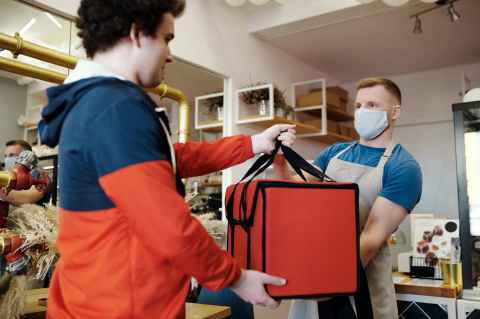
The educational sector is one of many that were severely affected by COVID-19. Most schools in the U.S. were closed throughout 2020, and many institutions shifted to online education. As we enter 2021, schools are expected to open and classroom learning will definitely resume. With this in mind, it is important to understand how students will be affected as they re-adjust to learning in the classroom in 2021.
Returning to Classroom Learning in 2021
As noted by UNESCO, COVID-19 might take a long time to contain, and everyone is learning how to live with it. In this context, schools must be ready to resume in-person learning, in spite of the pandemic.
If you are a student, returning to school in the middle of dealing with the pandemic comes with numerous challenges. Everything will be different. As highlighted by Dr. Edith Bracho-Sanchez during the ABCs of Back to School, the virus has not yet died. Everyone, including teachers and students, must adjust to the new school routines necessitated by the need to reduce the spread of the pandemic.
Let’s take a look at the different ways that COVID-19 will impact you, if you are a student returning to the classroom, or if you are a parent of a student returning to classroom learning.
Mandatory Mask-Wearing
Wearing a mask to reduce the spread of COVID-19 has become the norm in every area of the society, and the classroom is no exception. As noted by the University of California San Francisco in a recent article, masks significantly block respiratory droplets. As a result, students may be required to always wear a face mask during classroom learning. Wearing a face mask in the classroom presents its own special set of challenges, especially if you are a student.
These challenges include:
- Wearing masks the right way.
- Remembering to keep your mask on throughout the day.
- Finding a comfortable mask that does not affect your ability to concentrate during class.
- Wearing a mask that doesn’t hinder conversations with other students in the classroom.
- Adjusting to wearing a mask when the temperature makes the classroom warmer than usual.
Social Distancing
Social distancing presents one of the biggest challenges in the classroom. Remembering to maintain a one-meter distance from your best friend in the classroom, remembering not to whisper about school events, and remembering not to have discussions face to face in close proximity, represent some of the biggest challenges in terms of social distancing.
When you are excited about a discussion or an event, it is hard to remember to social distance. You may find yourself getting too close to other classmates without even realizing it. Try substituting conversation with hand gestures and visual class signals to maintain social distancing.
While adjusting to social distancing requirements in the classroom, group discussions may become a thing of the past. As noted by Understood, peer-to-peer teaching education may also not be possible, and your teachers may not be able to provide the same level of personalized attention that you may have become accustomed to, especially when you’re having trouble understanding a difficult lesson concept. Remember that teachers must practice social distancing in the classroom also, so do your best to adapt to different methods of teaching that your instructor might choose to incorporate into the classroom, to meet the requirements of social distancing.
The New Role of Teachers
Teaching while adhering to COVID-19 guidelines in the classroom presents it’s only set of unique circumstances. As a student trying to adapt to the “new normal,” don’t be surprised to see your teachers take on extra roles and responsibilities, which may extend beyond teaching and handing out assignments.
Teachers may, for example, take on the task of ensuring that all students wear masks and maintain social distancing, while simultaneously trying to keep you and your classmates motivated to learn. Do your best to focus and concentrate during class time, as your teacher adapts to the changing educational landscape in the world of COVID-19.
To increase your concentration span, your teachers may need to introduce physical activities while still maintaining social distance, or they might incorporate additional mental breaks into class time to help you re-energize your mind in order to stay focused on the lesson. You might see your teacher using learning aids and and audiovisual learning devices to help you and your classmates maintain mental clarity throughout the school day.
Learning Will Continue
Despite the issues brought about by the COVID-19, learning will continue, whether it is online or in person. Avidity Medical Design Academy also gives you the opportunity to learn something new, especially if you are learning online. Enroll in the course entitled, “How to Learn in the Healthcare Classroom (and ANY Classroom) (in 10 EASY Steps!)” to learn some strategies to keep learning, stay focused, improve your concentration, and stay on track with completing your assignments during this difficult time. Visit http://avidtiymedicaldesignacademy.com to learn more about our course offerings. Follow the Avidity Medical Design Blog to stay up to date on the latest news in healthcare education.





















